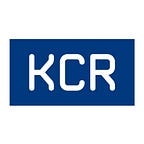eConsent — The Good the Bad and the Ugly
Doug Bain, Chief Technology Officer at KCR
The Ugly
Patient is handed a tablet with a request to read and consent to participating in the trial as per the discussion they have just had with the investigator. On it, they see a document with lots of words that they can scroll through. They scroll and scroll and scroll… and eventually get to a button ‘Sign’. They press it and it presents a legal disclaimer combined with a place to squiggle with a finger their signature. The patient does so. It looks nothing like their wet ink signature…
The tablet says ‘Thank You’. The study nurse takes the tablet away from them with an apology.
This ‘eConsent’ solution is no better than a piece of paper for the patient. Granted it might make life easier for the site or sponsor, but if anything it is less approachable and portable to a patient.
The Bad → The Good
A number of features can be applied that take an Ugly eConsent solution towards what I would personally class as a good solution. Some of these features favour the patient, others help the site and sponsor. I will break these down by segment.
For the Patient
Imagine a patient that is nervous about visiting a hospital, and even more nervous about participating in a clinical trial. The consenting process should help, not hinder, the process of supporting the patient make the right decision on whether the clinical trial is right for them.
For the patient, the eConsent solution should look like it is designed for the purpose of the audience. Large fonts, engaging graphics, explanatory videos, an FAQ, ‘Tell me More’ sections and more. To meet FDA Guidance, the eConsent solution should also allow the patient to ask questions. Ideally these are contextual to a section of the consent form being viewed. A simply quiz that checks that the patient has capture the main points might also be appropriate in some instances. Flexible options are key in a good eConsent solution.
In a remote setting, it should be possible for patients to be guided through the eConsent form online together with the investigator. This is not too dis-similar to remote learning solutions now used commonly in higher education.
In some situations, patients might wish to discuss the details of the clinical trial with family members. The eConsent solution should enable this allowing a patient to view the form on a home computer / browser or other suitable device.
Finally, the consent content should continue to help and support the patient throughout the life of the study, so it should be instantly available and searchable to them whilst carrying out trial activities such as ePRO or treatment.
For the Site
We have 3 types of eConsent solutions with regards how they support sites -
a). site centric / cross study solutions typically implemented by Site Networks,
b), study specific point solutions that are standalone for a particular study and
c). platform solutions that integrated with other elements such as recruitment, ePRO and/or EDC.
Of the 3 types of solutions, the most ugly are typically the study specific point solutions. They are disconnected from other activities meaning double entry and reconcilation tasks. They also typically require special site training.
The most convenient eConsent solution for sites is one that links upstream to Recruitment / Enrolment and/or IWRS and downstream to eConsent / ePRO. This ensures the right patients are consented in the correct order and prior to follow-on trial activities including ePRO and EDC data logging. These should also remove the need for later data reconciliation and queries between systems.
For Sponsors / CROs
Over and above convenience for sites and patients, Sponsors / CROs are looking for a solution that helps with consent form authoring, approvals, version control and translations. Version control in particular can be a right headache ensuring the right version is available to the right countries / sites at the right time. A good solution in this areas can pay for itself alone in avoiding protocol deviations and delays.
Conclusion
A good eConsent solution can help all stakeholders. An integrated platform based solution is ideal leading to better patient engagement, smoother site operations and consistency to sponsors.
About KCR:
KCR is a clinical development solutions provider creating value for biotechnology and pharmaceutical organizations. Founded in 1997, our expert teams support clients with full-service clinical development capabilities across three main areas: Trial Execution, Consulting and Placement. KCR operates across North America, Europe, and Australia, with main office locations in Boston, US, Berlin, Germany, and Warsaw, Poland. Our geographical coverage across 25+ countries, cutting-edge technical capabilities and tailored offerings allow for the optimized delivery of solutions to develop life-changing therapies. KCR offers access to an estimated population of 1.1 billion people. For more information visit www.kcrcro.com.
We see the human behind every number.
